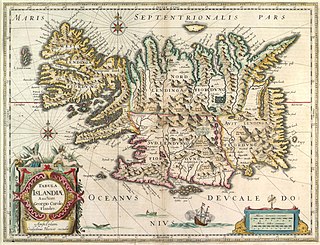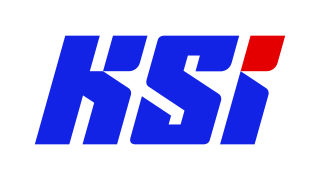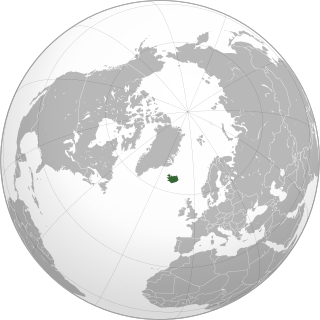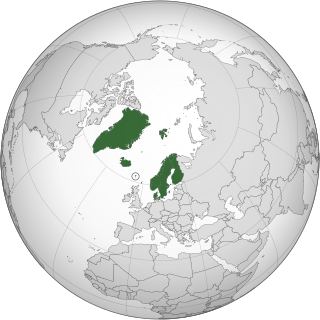This is a timeline of first ambassadorial appointments of Iceland by country.

Iceland is a Nordic island country in the North Atlantic Ocean and the most sparsely populated country in Europe. Iceland's capital and largest city is Reykjavík. Reykjavík and the surrounding areas in the southwest of the country are home to over two-thirds of the population. Iceland is the only part of the Mid-Atlantic Ridge that rises above sea-level, and its central volcanic plateau is erupting almost constantly. The interior consists of a plateau characterised by sand and lava fields, mountains, and glaciers, and many glacial rivers flow to the sea through the lowlands. Iceland is warmed by the Gulf Stream and has a temperate climate, despite a high latitude just outside the Arctic Circle. Its high latitude and marine influence keep summers chilly, and most of its islands have a polar climate.

Old Norse, Old Nordic, or Old Scandinavian is a stage of development of North Germanic dialects before their final divergence into separate Nordic languages. Old Norse was spoken by inhabitants of Scandinavia and their overseas settlements and chronologically coincides with the Viking Age, the Christianization of Scandinavia and the consolidation of Scandinavian kingdoms from about the 7th to the 15th centuries.

Reykjavík is the capital and largest city of Iceland. It is located in southwestern Iceland, on the southern shore of Faxaflói bay. Its latitude is 64°08' N, making it the world's northernmost capital of a sovereign state. With a population of around 131,136, it is the centre of Iceland's cultural, economic and governmental activity, and is a popular tourist destination.

The recorded history of Iceland began with the settlement by Viking explorers and the people they enslaved from the east, particularly Norway and the British Isles, in the late ninth century. Iceland was still uninhabited long after the rest of Western Europe had been settled. Recorded settlement has conventionally been dated back to 874, although archaeological evidence indicates Gaelic monks from Ireland, known as papar according to sagas, had settled Iceland earlier.

The Alþingi is the supreme national parliament of Iceland. It is the oldest surviving parliament in the world. The Althing was founded in 930 at Þingvellir, situated approximately 45 kilometres (28 mi) east of what later became the country's capital, Reykjavík. Even after Iceland's union with Norway in 1262, the Althing still held its sessions at Þingvellir until 1800, when it was discontinued. It was restored in 1844 by royal decree and moved to Reykjavík. The restored unicameral legislature first came together in 1845 and after 1874 operated in two chambers with an additional third chamber taking on a greater role as the decades passed until 1991 when Althing became once again unicameral. The present parliament building, the Alþingishús, was built in 1881, made of hewn Icelandic stone. The unicameral parliament has 63 members, and is elected every four years based on party-list proportional representation. The current speaker of the Althing is Birgir Ármannsson.
The Cod Wars were a series of 20th-century confrontations between the United Kingdom and Iceland about fishing rights in the North Atlantic. Each of the disputes ended with an Icelandic victory.
Sagas are prose stories and histories, composed in Iceland and to a lesser extent elsewhere in Scandinavia.

Icelandic names are names used by people from Iceland. Icelandic surnames are different from most other naming systems in the modern Western world by being patronymic or occasionally matronymic: they indicate the father of the child and not the historic family lineage. Iceland shares a common cultural heritage with the Scandinavian countries of Denmark, the Faroe Islands, Norway, and Sweden. Unlike other Nordics, Icelanders have continued to use their traditional name system, which was formerly used by all Nordic countries except partly Finland. The Icelandic system is thus not based on family names. Generally, with few exceptions, a person's last name indicates the first name of their father (patronymic) or in some cases mother (matronymic) in the genitive, followed by -son ("son") or -dóttir ("daughter").

Eyjafjallajökull, sometimes referred to as E15, is one of the smaller ice caps of Iceland, north of Skógar and west of Mýrdalsjökull. The ice cap covers the caldera of a volcano with a summit elevation of 1,651 metres (5,417 ft). The volcano has erupted relatively frequently since the Last Glacial Period, most recently in 2010, when, although relatively small for a volcanic eruption, it caused enormous disruption to air travel across northern and western Europe for a week.

Icelanders are a North Germanic ethnic group and nation who are native to the island country of Iceland and speak Icelandic.

The Iceland national football team represents Iceland in men's international football. The team is controlled by the Football Association of Iceland, and have been a FIFA member since 1947 and an UEFA member since 1957. The team's nickname is Strákarnir okkar, which means Our Boys in Icelandic.

The Icelandic Coast Guard is the service responsible for search and rescue, maritime safety and security surveillance, and law enforcement in the seas surrounding Iceland. The Coast Guard maintains the Iceland Air Defence System which conducts ground surveillance of Iceland's air space and operate Keflavik airbase. It is also responsible for hydrographic surveying and nautical charting.

The FootballAssociation of Iceland is the governing body of football in Iceland. It was founded on 26 March 1947, joined FIFA the same year, and UEFA in 1954. It organises the football league, Úrvalsdeild, and the Iceland men's national football team and Iceland women's national football team. It is based in Reykjavík.

Gylfi Þór Sigurðsson is an Icelandic professional footballer who plays as an attacking midfielder for Premier League club Everton and the Iceland national team.

Icelandic is a North Germanic language spoken by about 314,000 people, the vast majority of whom live in Iceland where it is the national language. As a West Scandinavian language, it is most closely related to Faroese, extinct Norn, and western Norwegian dialects.

The Nordic countries are a geographical and cultural region in Northern Europe and the North Atlantic. It includes the sovereign states of Denmark, Finland, Iceland, Norway and Sweden as well as the autonomous territories of the Faroe Islands and Greenland, and the autonomous region of Åland.

The 2010 eruptions of Eyjafjallajökull were a period of volcanic events at Eyjafjallajökull in Iceland which, although relatively small for volcanic eruptions, caused enormous disruption to air travel across western and northern Europe over an initial period of six days in April 2010. Additional localised disruption continued into May 2010, and eruptive activity persisted until June 2010. The eruption was declared officially over in October 2010, after 3 months of inactivity, when snow on the glacier did not melt. From 14–20 April, ash from the volcanic eruption covered large areas of Northern Europe. About 20 countries closed their airspace to commercial jet traffic and it affected approximately 10 million travellers.
The COVID-19 pandemic in Iceland is part of the worldwide pandemic of coronavirus disease 2019 caused by severe acute respiratory syndrome coronavirus 2. The virus was confirmed to have reached Iceland in February 2020. As of 26 January 2022, the total number of cases registered was 63,188, of which 51,550 had recovered and 46 deaths had occurred. With a total population of 368,590, the infection rate is 1 case per 61 inhabitants; the infection rate was one of the highest in the world throughout March and April, though this was attributed to more tests having been carried out per capita in Iceland than any other country, including a screening of the general population run by Icelandic biotech company deCODE genetics to determine the true spread of the virus in the community.
COVID-19 vaccination in Iceland is an effort to immunize the adult population of Iceland due to the COVID-19 pandemic. As of July 2021, more than 260,000 individuals had received at least one dose of COVID-19 vaccine, which was over 78% of the country's population. On November 21, 2021, 90% of the target population had been fully vaccinated, while around 1 in 5 people had received a booster on top of that; by December 9, 2021, the share of the population having received a booster shot exceeded 50%. On December 13, 2021, the country began offering Pfizer vaccinations to children aged 5–11.